History of Wing Chun
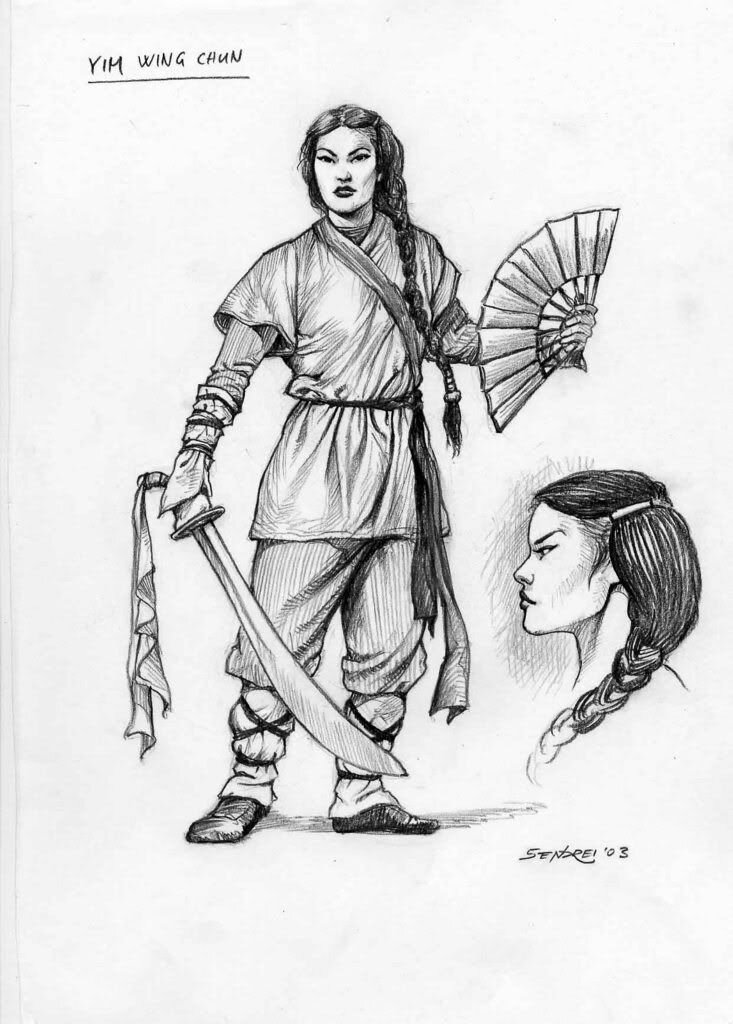
Welcome to the History of Wing Chun proudly presented by the World Budo Alliance.
History of Wing Chun: How Wing Chun Was Created
The history of Wing Chun is relatively modern compared to other Chinese martial arts. Many ask “how did Wing Chun originate?” And the answer is varied, due in no small part to oral traditions. Most of all the History of Wing Chun has a number of branches.
But at its center are common threads of Wing Chun’s creation. Therefore in this article, we’ll share that central origin of Wing Chun’s history.
Wing Chun History—Different Versions
So, the History of Wing Chun is, as stated above, varied. And the legendary history of Wing Chun points to a Buddhist nun by the name of Ng Mui. And who used her own knowledge of Shaolin Kung Fu to take advantage of various weaknesses that were found in other systems of the Shaolin arts.
Firstly according to Ip Man, it was not until Ng Mui met a girl named Yim Wing Chun, after fleeing the Kanxi Emperor’s forces. And who had attempted to destroy Henan Shaolin Monastery, that our art got its name. A bandit had been trying to force Yim Wing Chun into marriage. Very important it was the art of Wing Chun that defeated the bandit.
Secondly, Ng Mui’s way of teaching Yim Wing Chun was taught in a way so that she could learn quickly. And without having to develop strength. In a way, one could view this as a sort of David vs. Goliath story. However, this story of Yim Wing Chun is not the only history told of Wing Chun’s creation.
Some of the earliest mentions of Wing Chun date to the Red Boat Opera. These were a Cantonese group that traveled along southern China on red boats called “Junks” in the late 1800’s to the early 1900’s. This group played a big part in leading a popular uprising against the Qing Dynasty government. Thus using an early version of what we know as Wing Chun.
Another theory, presented by Karl Godwin, is that Wing Chun was born from western influence. He proposed how English sailors introduced boxing to the Chinese. And from there, Wing Chun would eventually be born. In his theory, Karl notes the similarities between classical pugilism and Wing Chun.
How Did Wing Chun Originate?
Wing Chun originated to take on bigger, stronger opponents. This can be seen in the Ng Mui Wing Chun origin story. But is this really how Wing Chun originated? No one truly knows. It is however, the story Ip Man told of how Wing Chun originated. (Ironic that people now ask if the movie story of Ip Man is true?)
And while the question of how Wing Chun originated is still talked about, the development of Wing Chun as a form of Kung Fu is much more cut and dry. Therefore Wing Chun was developed for self-defense. In any self-defense situation, the goal is to end it efficiently and quickly. And if you look at the story of Ng Mui and Yim Wing Chun, it is a story about how a teacher teaches a student how to defend herself from the unwanted and aggressive advances of a bandit trying to force her into marriage.
This story can be seen as a learning of self-defense at its core. If you also look at the popular uprising mentioned in the Red Boat Opera story, the reason why there was an uprising at all was due to living conditions being poor for most people living in Qing Dynasty China. Also both of these stories also share another common thread of a smaller entity taking on a larger entity.
Wing Chun History & Ip Man Lineage
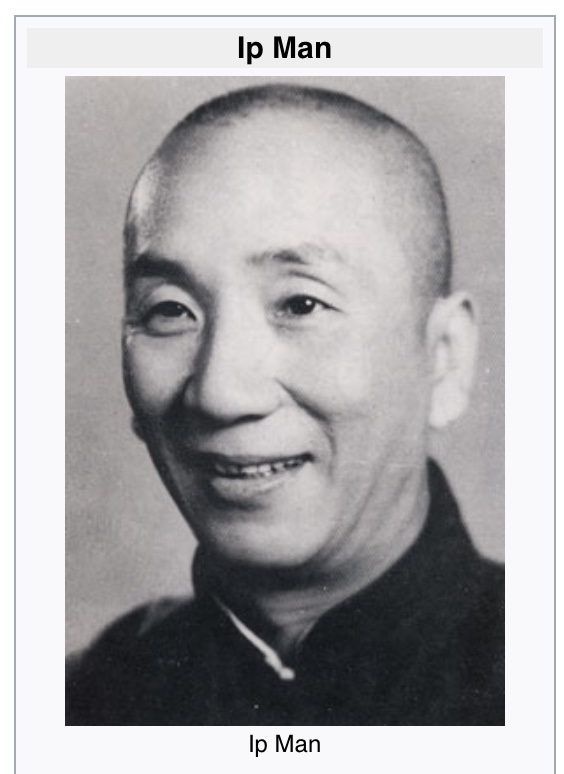
Most importantly it is with Ip Man that Wing Chun would eventually spread throughout the world. He taught in Hong Kong, most famously perhaps, Bruce Lee. In 1967, Ip Man, and some of his students, established the Ving Tsun Athletic Association in Hong Kong. (Note, “Ving Tsun” is another way that Wing Chun is pronounced.)
According to the late Grand Master Ip Man, Wing Chun comes from a lady in the 1700’s whose name was Yim Wing Chun,meaning “Beautiful Springtime” or “Springtime Song.”
The legend is that there was a Buddhist nun famous for her invention of various Kung Fu styles including “White Crane”,”Dragon”, “Wing Chun”, “her own style, etc. And her skill was in her leg work and in her ability to fight on top of well placed wooden poles called the plum blossom poles.
Continues
Yim Wing Chun, a beautiful tall lady from the North, used to sell delicious Chinese steamed buns of various sorts to the locals. Often people from the monastery would come down from the mountain to buy her goods.
One day a local martial arts bully who happened to be travelling through the town, noticed Yim Wing Chun’s beauty.
And so decided that she will be his wife. However she resisted all of his advances which annoyed him to no end. Finally he issued an ultimatum that said “marry me or I will destroy your family.” Most of all Yim Wing Chun didn’t know what to do so she confided in the Buddhist nun Ng Mui (Sometimes written Wu Mei) and told her the story.
Yim Wing Chun
In her wisdom Ng Mui developed a plan. She told Yim Wing Chun to tell the bully that she will marry him one year later on the condition that he could defeat her in a public fight on top of a stage for all the town folks to see. In the mean time the Buddhist nun Ng Mui promised to train Yim Wing Chun day and night over the next year to prepare her for this event.
Therefore the bully being overly confident and chauvinistic had never seen a woman that could defeat any male martial artist. So he without hesitation accepted the challenge. And he thought “what a fun way to gain a wife.” He knew that if he did lose then he would lose face and no woman would marry him after that. But he was willing to risk that because it was unheard of that a woman could be better than her husband in martial art.
Day in and day out Ng Mui trained Yim Wing Chun. She taught Yim Wing Chun the elements of Snake style and Crane style fighting which she said was more suitable for a lady. And that both systems were designed in their own ways to deal with massive strength. Both systems were fluid, flexible and very fast. The quick movements of the Crane and Snake wold be combined with very agile footwork to produce an elusive fighter that could not be hit yet could accurately strike with blinding speed at will.
Yim Wing Chun - the Fight
Therefore a year late a stage was built in the center of the town for of town for the famous match to be held. This method was common in those days for challenge matches between practitioners of various Kung Fu arts. Most of all little is known about the actual fight but the results of the fight became known far and wide. Later through Yim Wig Chun and her future husband’s, the style of his wife became famous. Thus many variations of the art spread to Southern China.
There are many versions of this story. These days various independent researchers cannot really find evidence of this story. Nor can they find any alternate story which more credibility.
Master Wang Kiu himself went to China many times to research the origins of Wing Chun. And he concluded that there was no real traceable history of Wing Chun that could extend back to the Shaolin days. He said that a Man by the name of Lee Man and Ip Man. And that is was developed the Yim Wing Chun story for marketing purposes. And to connect the art to a famous legendary figure from Chinese novels called Ng Mui.
This story and it’s variants still float around, not because it is really true, that’s why it is called a legend, but because it immediately give a Wing Chun practitioner and the teacher an idea about what Wing Chun must be like.
Ip Man
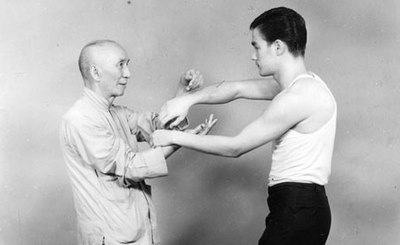
Ip Man, also known as Yip Man, 葉問 / 叶问; Born in October 1893 and passed 2 December 1972 was a Chinese martial artist and a grand Master of the martial art Wing Chun. He had several students who later became martial arts masters in their own right, the most famous among them being Bruce Lee.
Early life
Ip Man was born as Ip Kai-man (葉繼問) to Ip Oi-dor (葉靄多) and Ng Shui (吳瑞) as the third of four children. He grew up in a wealthy family in Foshan (Fatshan), Guangdong (Kwangtung).
And received traditional Chinese education, alongside his elder brother Ip Kai-gak (葉繼格), elder sister Ip Wan-mei (葉允媚) and younger sister Ip Wan-hum (葉允堪).
Most important is that Ip started learning Wing Chun from Chan Wah-shun when he was 9.
Chan was 57 at the time, and Ip became Chan's 16th and last student. Due to Chan's age, he was able to train Ip for only three years before suffering a mild stroke in 1909 and retiring to his village. And Ip learned most of his skills and techniques from Chan's second most senior student, Ng Chung-sok (吳仲素). At the age of 16, with help from his relative Leung Fut-ting,
So, Ip moved to Hong Kong and there he attended school at St. Stephen's College. Which is a secondary school for wealthy families and foreigners living in Hong Kong. Six months after moving to Hong Kong, a classmate of Ip's named Lai told him that a friend of Lai's father who was an expert in Kung Fu techniques was living with them. And had offered to have a friendly sparring match with Ip.
Ip Man
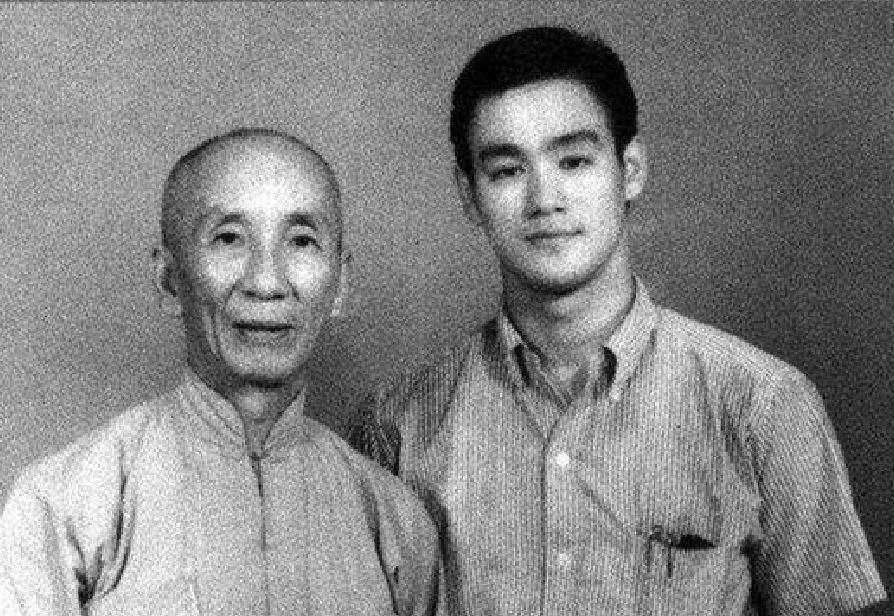
At the time, Ip was undefeated so he eagerly accepted the challenge. Therefore he went to Lai's house on a Sunday afternoon. And, after exchanging brief pleasantries, challenged the man to a duel. The man was Leung Bik and he easily overwhelmed Ip Man.
Incredulous at the speed with which he had been countered, Ip requested a second duel and was beaten again, just as soundly. Discouraged by his defeat, Ip left without a word.
And afterward was so depressed that he did not dare mention that he knew Kung Fu.
A week later, Lai told him that the man he had fought was asking after him. And Ip replied that he was too embarrassed to return. Therefore at which point Lai told him that Leung Bik had highly praised his Kung Fu techniques. And that he was the son of Leung Jan, who trained Ip's master Chan Wah-shun. Ip proceeded to train with Leung Bik, until Leung's death in 1911.
Ip returned to Foshan in 1916 when he was 24 and became a police officer there for the Nationalist government. He taught Wing Chun to several of his subordinates, friends and relatives, but did not officially run a martial arts school.
He married Cheung Wing-sing and they had several children: sons Ip Chun and Ip Ching and daughters Ip Nga-sum (葉雅心) and Ip Nga-wun (葉雅媛).
Also Ip was a member of the Kuomintang, and according to rumors, he joined the Central Bureau of Investigation. And Statistics in its academy in Guizhou in 1938, after which he would have returned to Foshan as an undercover intelligence officer. However, the veracity of this has been disputed.
Thus Ip went to live with Kwok Fu during the Second Sino-Japanese War and only returned to Foshan after the war, where he resumed his career as a police officer. Where Ip found some time to train his second son Ip Ching during the year 1949.
At the end of 1949 after the Chinese Communist Party won the Chinese Civil War, as Ip was a member of the Kuomintang, Ip, his wife and their elder daughter Ip Nga-sum left Foshan for Hong Kong.
Life in Hong Kong
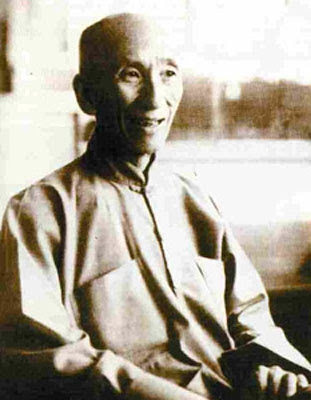
So,Ip, his wife Cheung and their daughter arrived in Hong Kong through Macau in 1950. His wife and daughter would later return to Foshan to retrieve their identity cards. However, due to the closure of borders between China and Hong Kong in 1951, Ip and Cheung were separated for good.
Initially, Ip Man's teaching business was poor in Hong Kong because Ip's students typically stayed for only a couple of months. He moved his school twice: first to Castle Peak Road in Sham Shui Po, and then to Lee Tat Street (利達街) in Yau Ma Tei.
By then, some of his students had attained proficiency in Wing Chun and were able to start their own schools. They would go on and spar with other martial artists to compare their skills, and their victories helped to increase Ip's fame.
Around 1955, he had a mistress from Shanghai, who was referred to by his students simply as Shanghai Po (上海婆). Ip and this mistress also had an extramarital son named Ip Siu-wah (葉少華). Meanwhile, in Foshan, his wife Cheung died of cancer in 1960. Thus Ip never formally introduced his mistress to his other sons, who eventually arrived in Hong Kong to reunite with him in 1962.
Ip Man
In 1967, Ip and some of his students established the Ving Tsun (Wing Chun) also pronounced as "Wing Chun" Athletic Association (詠春體育會). The main purpose of the Ving Tsun Athletic Association was to help Ip tackle his financial difficulties in Hong Kong, which was due to his supposed regular use of opium.
One of his former students, Duncan Leung, claimed that Ip used tuition money to support his opium addiction. Ip's mistress died of cancer in 1968, and their son later became a Wing Chun practitioner like his half-brothers.
Researched by Sensei Kara Borshuk
Edited by Grand Master Art Mason